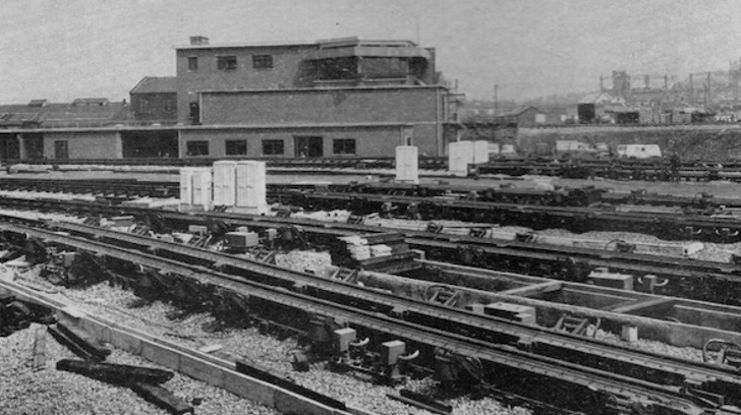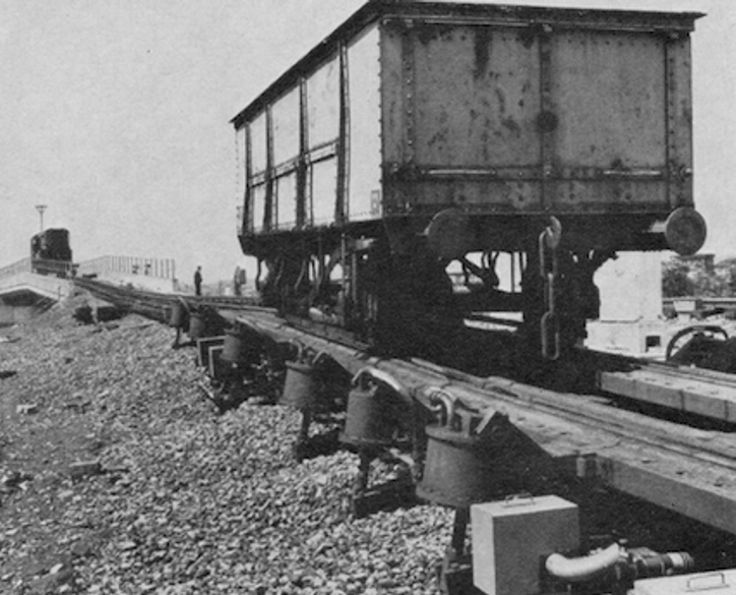Construction on the yard started in 1959 and was completed four years later. Permission was sought from the National Coal Board to build the yard as it was built upon a profitable coal seam. The last coal was worked out in 1961 and stabilisation works were undertaken to enable the yard to be constructed.
It was officially opened to traffic on 23 July 1963 by Lord Robens, who was chairman of the National Coal Board at the time. The yard had been conceived in the mid-1950s as part of the British Transport Commission's Modernisation Plan, which sought to rejuvenate the railways. Healey Mills was one of many hump yards being built, for whose traffic was planned in the 1950s, but by the time they were commissioned, lorries and fast motorways were eating into their ability to operate cost-effectively.

Well into the 1970s, the traffic at Healey Mills was in excess of the 4,000 wagons per week that it was designed for; in one study week in 1966, over 16,500 wagons were sorted in the yard.
Its location on an east/west axis meant that it was ideally positioned for the coal trains destined for either Lancashire, or the east coast ports of Hull, Immingham and Goole.
The new yard cost £3.75 million in 1963 (equivalent to £55 million in 2013), covered over 140 acres (57 ha) and stretched for 1.5 miles (2.4 km) alongside the railway and the River Calder.
The hump was installed at the west end of the yard so that traffic from the Yorkshire pits could be marshalled via a reversal over it, and then staged for delivery to either the east coast ports or Lancashire.
It contained 120 sidings (covering 57 miles (92 km) of track), fourteen reception sidings over a semi-automated hump that led to 50 sorting sidings, and then a secondary yard with 25 sidings.

The yard also had thirteen departure roads as well as fifteen staging sidings for block (trainload freight) trains. Healey Mills, which was situated between Mirfield and Wakefield Kirkgate replaced several smaller yards in the Dewsbury/Wakefield area (namely Brighouse, Crofton Laden, Horbury Junction Sidings, Low Moor, Mirfield, Mytholmroyd, New Withams, Turners Lane and Wakefield Exchange). Three other yards, Copley Hill, Crofton Empty and Hillhouse, worked in a smaller capacity than before as some of their traffic was transferred to Healey Mills.
When British Rail launched Speedlink (their air-braked wagonload network) in 1975, Healey Mills was one of twelve yards across the network where traffic could be swapped and interchanged.
Source: Wikipedia